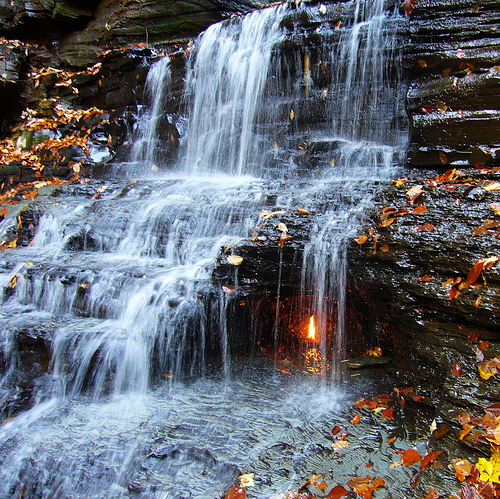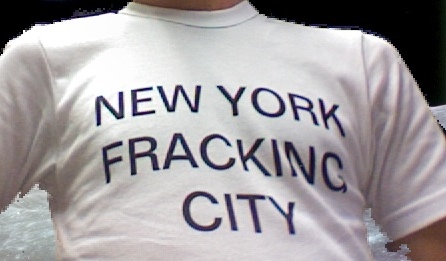Fracking in the news! Lots of news about fracking! Step right up, get your fracking news!
New York won’t allow fracking this year
New York Gov. Andrew Cuomo (D) made it official yesterday: The state’s review of the health effects of natural gas drilling won’t be ready until next year. According to sources that I have at the highest levels of various fracking companies, the CEOs of said companies said, “Aw, fiddlesticks,” and did that thing where you snap your fingers while you swing your hand in front of you. Is there a name for that? I don’t know. People don’t do that very much anymore, but fracking company CEOs have a median age of 206.
The state was supposed to have come to a final decision on fracking rules by the end of the month. From the Associated Press:
The deadline for finalizing regulations is Nov. 29 under the state Administrative Procedures Act, which says a proposed rule expires 365 days after the last public hearing unless it’s officially adopted by then. If the regulation isn’t finalized by the deadline, the agency has 90 days to submit a new notice of rulemaking, and another 90 days to complete the job. That could potentially delay a final decision for six months. The public would have the opportunity to comment during that time.
A panel of three nationally recognized public health experts was named last week to review the state’s health impact study of fracking. Cuomo told a radio interviewer Tuesday he sees no way the panel’s work can be completed by the end of next week.
The health review is expected to be more thorough than the one I did, in which I drank fracking fluid and lit some natural gas on fire (it was actually butane from a lighter) and jumped down a drilling shaft (it was a staircase). I found no ill effects.
Wisconsin is experiencing a sand boom
We’ve written about this before, at least twice. But I decided to share this Los Angeles Times article for two reasons. First, this quote, which is informative.
Here the particular types of sand vital to the controversial production technique called hydraulic fracturing, or fracking, lie just beneath the surface. Ground zero for industrial sand mining is western Wisconsin, in counties like Trempealeau, Buffalo and Chippewa. At least 60 industrial sand mines are functioning or in the permit process in the area, up from five in 2010. …
To get to the sand, companies must blast and strip-mine fields and ridges. Their trucks ply the two-lane country roads nonstop to haul the sand to processing plants and railheads, where it is shipped to far-flung oil and gas fields. Residents worry that when strong winds lift the fine, washed sand from outdoor piles, the dust could lead to respiratory problems.
People are getting in disputes about it, as they do. But the other reason I wanted to share the article is its headline: Mining sand for fracking causes friction in Wisconsin.
DO YOU GET THE JOKE? DO YOU? Hint: The joke lies in the sixth word. Get it? No? Here, this might help. Still nothing? Well, then you won’t like this other joke I know about hormones, either.
Fracking companies start to recycle fracking water
This is good news. As ProPublica noted earlier this year, fracking wastewater is often injected into wells at higher pressures than is legal (which allows the fracking company to stuff more water in). This can make those wells more prone to leaks. Reusing that water means fewer high-pressure wells. And, of course, less water usage overall. According to one estimate, the amount of water used to frack the nation’s 35,000 wells is equivalent to the amount used by the city of Chicago.
From The Wall Street Journal:
While the recycled water can’t currently be cleaned up enough for drinking or growing crops, it can be cleaned of chemicals and rock debris and reused to frack additional wells, which could sharply cut the costs that energy companies face securing and disposing of water.
Some companies are finding it is still cheaper in many parts of the U.S. to inject the wastewater deep underground instead of cleaning it, which has slowed adoption of recycling technology. But experts say that is likely to change as fracking grows.
At [fracking company] Schlumberger, which predicts that a million new wells will be fracked around the world between now and 2035, reducing freshwater use “is no longer just an environmental issue — it has to be an issue of strategic importance,” Salvador Ayala, vice president of well-production services, told a recent conference.
So reusing that water makes sense and … Wait, what? A million new wells? A million wells is the equivalent of 28-and-a-half Chicagos of water. And all of the other wonderful side effects of a fracking site, a million times over.
And now you have something to be thankful for during your Thanksgiving dinner.




